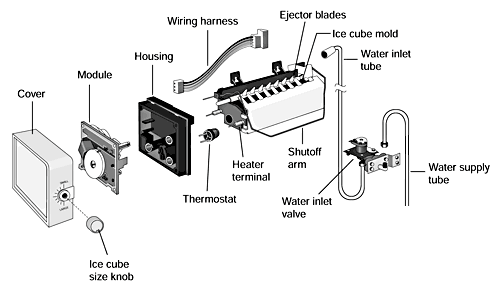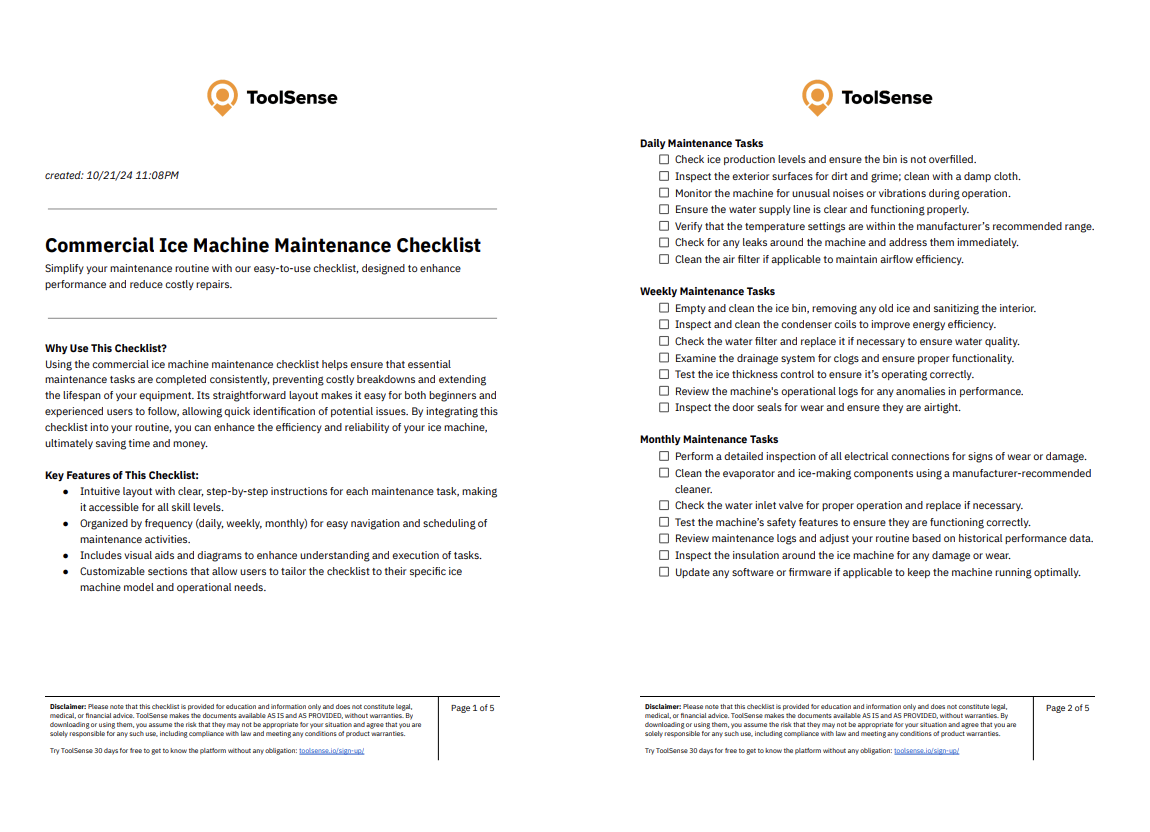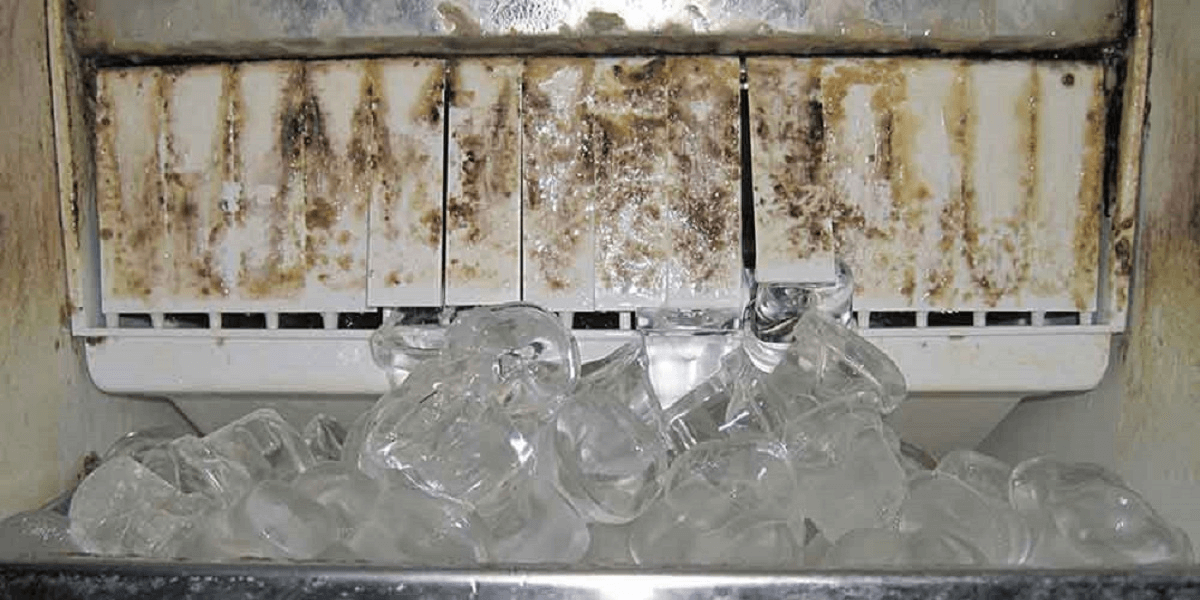How to Clean Ice Maker: Easy Steps
This post contains affiliate links. As an Amazon Associate, we earn from qualifying purchases.
That persistent musty odor wafting from your ice maker isn’t just annoying—it’s a serious red flag. When your ice cubes turn cloudy, develop odd flavors, or worse, show black specks in the bin, your appliance is screaming for attention. Since the FDA classifies ice as food, regular sanitation isn’t optional—it’s critical for safe consumption. Whether you’re battling hard water mineral buildup in your fridge or mold in a countertop unit, skipping cleaning puts your health at risk. This guide delivers battle-tested methods to restore pristine ice production without damaging your machine. You’ll learn exactly when to clean, which solutions actually work, and how to fix stubborn problems like black gunk or cloudy cubes—so your ice stays crystal-clear and taste-free.
Refrigerator Ice Maker Deep Cleaning Protocol

Essential Supplies Checklist
Gather these before starting: two clean dishcloths, warm water mixed with mild soap or vinegar, a soft sponge, and a replacement water filter (critical at the 6-month mark). Always unplug your refrigerator first to prevent accidental ice production during cleaning. Remove expired freezer items and wipe spills before accessing the ice maker—this prevents cross-contamination.
Step-by-Step Interior Cleaning
1. Power down completely and remove the ice bin using your owner’s manual instructions. Hand-wash it with warm soapy water, focusing on corners where mold hides. 2. Wipe interior surfaces with a vinegar-soaked cloth to dislodge stuck ice chunks—never use sharp tools that could damage components. 3. Dry thoroughly with a clean towel; residual moisture invites mold regrowth. 4. Replace your water filter—this single step solves 80% of cloudy ice issues caused by mineral buildup. 5. Restart and flush by discarding the first 2-3 ice batches to eliminate cleaning residue. Skipping this risks chemical-tainted ice.
Ice Dispenser Line Sanitizing
Shut off the water valve, then disconnect the ice maker line per your manual. Pour 3-4 cups of white vinegar through a funnel into the line, clamp it shut for 10 minutes to dissolve slime, then rinse extensively with clean water. Critical mistake: Never mix vinegar with bleach—this creates toxic fumes. Reconnect lines only when completely odor-free.
Freestanding Ice Machine Cleaning Cycle
One-Hour Refresh Process
1. Power down and wait 10 minutes for trapped ice to release naturally. 2. Empty all ice from the bin bottom—never force stuck cubes. 3. Drain water by removing the drain cap from the water pan; let it fully empty before resealing. 4. Add cleaner using the precise ratio: 16 oz commercial cleaner plus 32 oz water (fill the bottle twice). 5. Start cycle by pressing “Clean”—a blinking light confirms operation. 6. Complete and rinse when the light stops; remove the drain cap to empty solution. Pro tip: Run a second water-only cycle to ensure no residue remains before making ice.
Commercial Ice Machine Sanitizing System

Weekly Safety Protocol
Always wear rubber gloves and safety glasses—commercial cleaners are highly concentrated. 1. Turn off and empty all ice from the bin. 2. Wipe surfaces to remove water and debris. 3. Apply diluted cleaner per manufacturer specs, letting it dissolve scale for 15 minutes. 4. Scrub stubborn areas with a soft brush (never metal scourers). 5. Sanitize with NSF-certified no-rinse solution like Nyco® N601+. 6. Air dry completely—never restart with damp parts.
Six-Month Deep Clean Breakdown
Cleaning Phase: Allow ice to melt from the evaporator, remove access panels, and run a full cycle with diluted cleaner. Use a toothbrush for crevices where mineral scale hides. Rinse all internal components thoroughly. Sanitizing Phase: Run a separate cycle with diluted sanitizer, then sanitize removed parts individually. Reinstall components and always discard the first ice batch—this is non-negotiable for food safety compliance.
Fix Urgent Ice Maker Problems Now
Eradicate Mold and Mildew Growth

Black spots in countertop units mean trapped moisture is breeding mold. Immediate action: Disconnect power, remove all ice/water, and take out removable parts. Clean the interior with warm soapy water, then apply vinegar solution (1:1 ratio) and let sit 15 minutes before rinsing. For severe cases, use 1 tbsp bleach per gallon of water—never mix with vinegar—rinse 3x, and run a cleaning cycle. Prevention secret: Position units 4+ inches from walls for airflow; enclosed spaces trap humidity.
Dissolve Mineral Scale Buildup
Hard water leaves chalky white deposits that slow freezing and cloud ice. Effective solution: Run an extra cleaning cycle with commercial descaler (like Affresh®) or vinegar solution. For stubborn scale, dip an old toothbrush in cleaner and gently scrub evaporator plates. Long-term fix: Install a water filter or test your supply—if hardness exceeds 7 grains/gallon, add a dedicated filtration system.
Eliminate Cloudy Ice Permanently
Grayish, opaque ice signals mineral contamination or old filters. Quick fix: Replace your water filter immediately—every 6 months is mandatory, not optional. Proven method: After cleaning, run three consecutive ice batches and discard them; this flushes residual minerals. If problems persist, increase cleaning frequency to quarterly and verify sanitizer isn’t overused (excess leaves film).
Maintenance Schedule That Prevents Emergencies
Daily and Weekly Non-Negotiables
Discard ice older than 2 days—stale cubes absorb odors. Wipe spills immediately with a vinegar-dampened cloth. Monitor production speed; if ice release slows by 30%, schedule a deep clean. Commercial operators: Log every cleaning in your health compliance binder—inspections will demand proof.
Monthly and Semi-Annual Tasks
Inspect for visible mold weekly and scale monthly. Check water filter status indicators religiously. Every 6 months: complete a full cleaning cycle, replace filters, and clean condenser coils on commercial units. Critical oversight: Never store units in unventilated cabinets—this creates a mold incubator. Always let interiors dry 24 hours before reuse.
Safety Compliance You Can’t Ignore
Always discard ice produced during cleaning cycles—chemical residue is invisible but dangerous. After sanitizing, never skip discarding the first full batch; this is FDA-mandated for food safety. Commercial kitchens must use only NSF-certified products like Nyco® cleaners and document every procedure for health inspections. Red flag: If vinegar or bleach odors linger after rinsing, repeat flushing cycles until ice is completely odorless. Your health depends on it.
Clean ice makers produce safe ice—period. By following these precise steps, you’ll eliminate health hazards while restoring crystal-clear, flavor-free cubes. Stick to the twice-yearly schedule for fridges, weekly for commercial units, and never ignore early warning signs like odd smells or slow production. Within one cleaning cycle, you’ll taste the difference: pure, refreshing ice that meets food safety standards. Start today—your next glass of water deserves nothing less.
